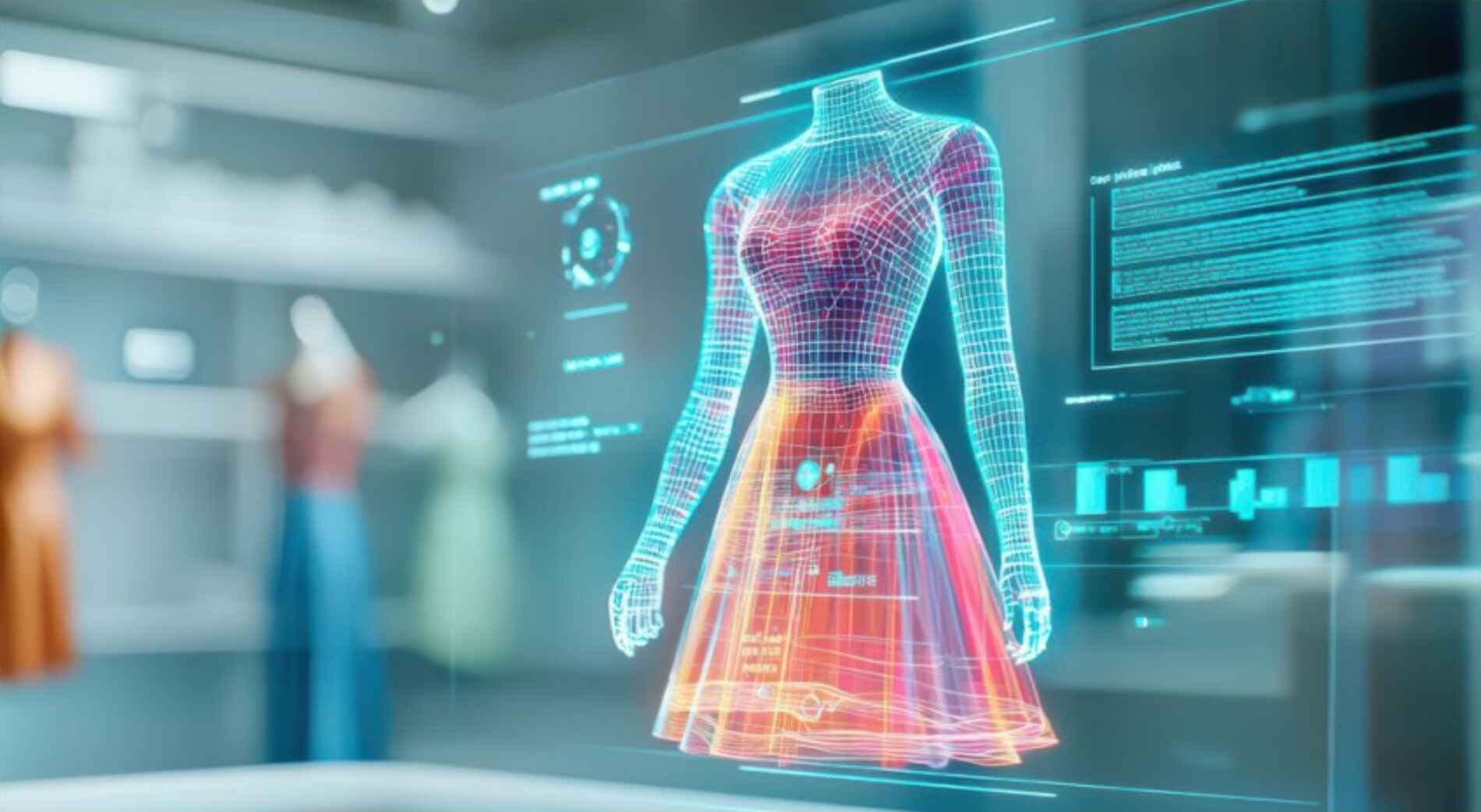
Get ready — the next fashion trend you experience will likely not involve new styles, retro fabrics, fittings or runway showcases, but electronics. Artificial intelligence has not only begun reshaping industry traditions and timetables but can now allow you to get the perfect style and fit without ever having to leave home.
“AI-powered tools now allow designers and even consumers to virtually conceptualize and visualize garments in countless styles, colors, fabrics and fits,” said Tanqueray Edwards, founder of Charleston-based TR Edwards Consultancy, which helps businesses leverage AI for increased profitability and streamlined workflows. “It propels the design cycle forward, ensuring a much quicker journey from idea to finished product.”
THEN VS. NOW

Consider shopping for something unique to wear to a special event in the 1950s. Your options would include attending a fashion show in person with real models and runways, visiting a hometown store that specialized in in-house designs, contacting a top fashion designer to create a one-of-a-kind piece just for you (if you have enough money and can get their attention) or going to a local tailor to discuss fabrics and styles, get measured and fitted then have something created to your specifications. All of which could take considerable time, money, energy and material.
Fast-forward to now, with all of those options still available but with a new one, too. AI virtual representations of clothing and accessories, where models walk runways in digital space, showcasing numerous designs and colors almost at a glance for you to mix and match options with a designer in one fell swoop.
Giant international fashion companies such as Sweden’s H&M, London’s ASOS and Spain’s Zara, which operates approximately 1,800 stores in more than 90 countries worldwide, leverage artificial intelligence to maintain leading positions in the fast fashion industry.
LOCAL ADOPTION
“Among the many AI services my clients seek, the top three would be automation of repetitive tasks, knowledge transfer and utilizing AI tools as a thought partner for the creative process,” Edwards said. Locally, however, Al has been adopted sparingly as a business tool.
“I really don’t use AI unless it’s for captions on social media,” said Kilby Bronstein, owner of the Finicky Filly boutique on King Street. And Ali Guy, marketing manager with Rhodes Boutique in South Windermere Center, pointed out that Al is used in their business only for customer convenience.
“We rely a lot on digital marketing, as a lot of our audience is out of state and every item in our store is available online,” Guy said. “And while we incorporate AI into our platforms, our heart is human connection. We’re focused more on that than an AI-driven market.”
THE HUMAN TOUCH
She added that while Rhodes uses AI tools to help market the business, showcase store items and recruit team members, none of the management team and none of the customers have shown any desire to replace the personal connection with something artificial.
“AI is also a way to cut corners, and that’s where we draw the line,” Guy said. “We are all going to be more influenced in some ways by AI, directly or indirectly. But in our world of fashion, we pride ourselves on using real models, diverse body types, clothes on real women of different sizes and ages and styles that fit a wide variety of customers — so that the moment you start your journey with us, it’s an experience that’s happy and rewarding and joyful, and gives you what the online retail giants can’t.”
So even if AI eventually carves out a sizable niche across all fashion markets, as Edwards predicts, you might still want to leave home and mingle with designers and explore options. After all, personal interaction is still what the fashion business is all about.
LOOKING AHEAD
“AI is now accelerating the entire creative process, generating novel design concepts, digital prototypes and lessening the reliance on costly physical samples,” Edwards said. “It’s revolutionizing trend forecasting, enabling rapid analysis of millions of images from social media and runways to predict emerging trends in colors, fabrics and more. And looking ahead, AI could also play a crucial role in sustainability efforts by identifying sustainable materials, optimizing cutting patterns to reduce waste and facilitating the recycling of garments.”
As technology continues to evolve, the fashion industry faces the challenge of balancing innovation with the human connections that make shopping a personal, joyful experience.
BY L.C. LEACH III